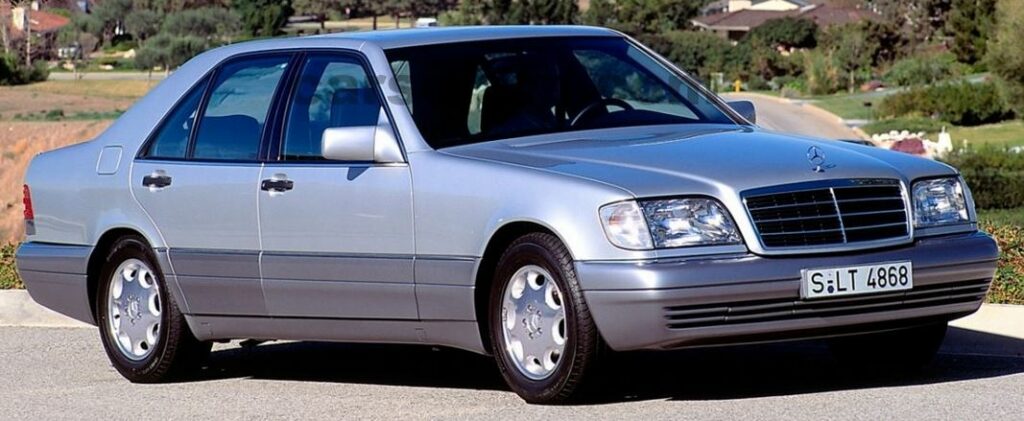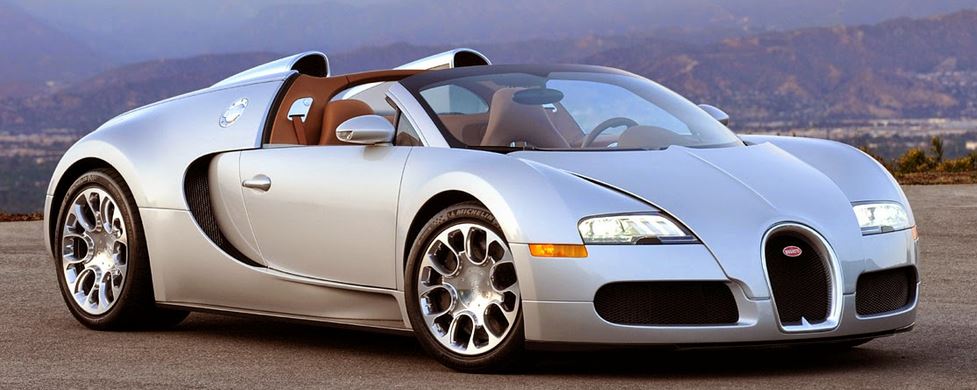I’ve always had a soft spot for the Mercedes Geländewagen (“G-wagon/-wagen”) in pretty much all its versions because… well, because despite all its flaws (brick-like aerodynamics, gas-guzzling engine, tank-like ride blah blah blah) all wrapped up in an astronomical price:
I still want to own one. Badly. And even despite Mercedes having done away with a stick shift in the early 2000s (pppppbbbbbbbbbtttttt).
Maybe it’s because of all those flaws, or maybe it’s because at the end of the day, the ur-military design and engineering means that the G is pretty much indestructible and will take you to places that would overturn a Jeep, overpower a Range Rover and make even the old Toyota Landcruiser shake with fear.
Not that I myself would ever put any of that to the test, of course, because a.) I’m too old for such foolishness and b.) my idea of a “challenging ride” is negotiating the speed bumps in my apartment complex without becoming airborne or blowing out the suspension.
So why would I want a G-wagen? Just because. Because in a world of cars designed and built for today’s softer man, there is still an option to say, “Fuck it” and drive something that makes a statement — that statement being: “This asshole has too much money and is wasting it on a truck that costs almost as much as a Bentley.”
To which the typical G-wagen owner will reply, “Yeah? And so?”
It’s the ultimate middle digit directed at the Greens, the wealth-envious, the nannies at the NHSA and pretty much all the little petty totalitarian wannabes who want to tell us how to run our lives and prevent us from owning this and making our only choice that. And it’s always been that way, from earlier times:
1984

…to the early 2000s:
2005

…and today:
G55

…and if there’s a better picture that encapsulates the hulking body and brooding spirit of the G-wagen, I haven’t found it yet.
Needless to say, of course, Mercedes being no longer the militaristic- and engineering-focused company that it once was, has bowed in obeisance to the Global Cooling Climate Warming Change© hysteria, and will now produce… an electric G-wagen. Here’s a pic:

(yeah, it looks more like the new Ford Bronco and relaunched Land Rover than a G-wagen)
What amuses me is that Mercedes were going to call it the EQC or some such bollocks, but realized that making it sound like something Apple would make might be a bad idea — so they dropped that and called it the G580 (because the Duracell-powered engine produces 580hp and gets it to 60mph in under five seconds, whoop-dee-doo).
And this?

They’ve dropped the spare wheel to accommodate the massive, pythonesque charging cable that will be needed to recharge the Duracells every 285 miles — uh-huh — with no mention of how long said process will take. Of course.
By the way, the Duracell G-wagen weighs about 3.5 tons (6,800lbs) compared to the “normal” G-wagen’s 2.5 tons (5,500lbs).
And to complete the cynicism of the whole exercise, it has a CD player under the hood which creates a fake “G-wagen roar” instead of the typical electric engine’s “Thunberg whine”.
Here’s an overview of the thing.
Anyone who knows me will be able to predict that I regard this fucking piece of shit with something akin to sex with Rebel Wilson or Lizzo — i.e. no man should — and I haven’t even discussed its price yet. Okay, I will: $190,000 (compared to the G550’s $150k).
Considering, as I’ve said before, that the G-wagen I really want is the diesel-powered
1984 300GD

…with a manual gearbox and separate transfer case for serious 4WD activity, you may understand how far off the new Mercedes is from my radar screen.
And the fully-reconditioned- and rebuilt G-wagen above has a F.O.B. sticker price of $55,000. The hundred-odd grand in “savings” would be spent on a sports car like a second-hand low-mileage Mazda Miata:

…and guns like this H&H Cavalier.

Note that the Mazda has a manual transmission and the shotgun is a side-by-side: still more pointers that as far as I’m concerned, the modern world and all its whizz-bang technology can go and fuck itself.























 More roomy (and much more powerful and reliable) than the MG T car models, the “25” had a 4.3-liter straight-six engine which provided 137bhp. Sufficient for the time, and sufficient for the Brit country roads I’d be driving on. Other candidates for this spot: the aforesaid
More roomy (and much more powerful and reliable) than the MG T car models, the “25” had a 4.3-liter straight-six engine which provided 137bhp. Sufficient for the time, and sufficient for the Brit country roads I’d be driving on. Other candidates for this spot: the aforesaid  An actual British supercar, made to “compete” with the Gordon Murray-designed McLaren F1, the Fighter had a Dodge Viper V10 engine in a car which weighed half that of a Viper. Jeremy Clarkson once called driving it “stupendously suicidal”, and I can think of no higher praise. Other candidates:
An actual British supercar, made to “compete” with the Gordon Murray-designed McLaren F1, the Fighter had a Dodge Viper V10 engine in a car which weighed half that of a Viper. Jeremy Clarkson once called driving it “stupendously suicidal”, and I can think of no higher praise. Other candidates: 










